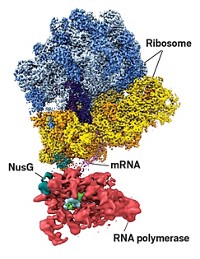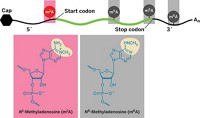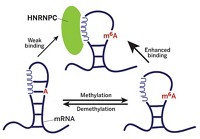Advertisement
Grab your lab coat. Let's get started
Welcome!
Welcome!
Create an account below to get 6 C&EN articles per month, receive newsletters and more - all free.
It seems this is your first time logging in online. Please enter the following information to continue.
As an ACS member you automatically get access to this site. All we need is few more details to create your reading experience.
Not you? Sign in with a different account.
Not you? Sign in with a different account.
ERROR 1
ERROR 1
ERROR 2
ERROR 2
ERROR 2
ERROR 2
ERROR 2
Password and Confirm password must match.
If you have an ACS member number, please enter it here so we can link this account to your membership. (optional)
ERROR 2
ACS values your privacy. By submitting your information, you are gaining access to C&EN and subscribing to our weekly newsletter. We use the information you provide to make your reading experience better, and we will never sell your data to third party members.
Biological Chemistry
RNA Transcription's Newfound Complexity
December 17, 2007
| A version of this story appeared in
Volume 85, Issue 51
Expression of specific genes is controlled by the complex pattern of phosphorylation of the enzyme that converts DNA into RNA, according to a report by Dirk Eick of the Munich Center for Integrated Protein Science, Shona Murphy of the University of Oxford, and colleagues in Science (2007, 318, 1777 and 1780). The enzyme, RNA polymerase II, is attached via an "umbilical cord" to proteins that help process the RNA product. This flexible tether, known as the carboxyl-terminal domain (CTD), is made of repeated sequences of amino acids. The phosphorylation pattern of these amino acids "has been proposed as a code that controls the binding of different regulatory factors to the enzyme," explains Jeffry L. Corden of Johns Hopkins Medical School in an accompanying Science commentary. The researchers show that CTD can be phosphorylated at more sites than previously thought "and link, for the first time, expression of specific genes with a distinct CTD phosphorylation pattern," Corden writes.





Join the conversation
Contact the reporter
Submit a Letter to the Editor for publication
Engage with us on Twitter